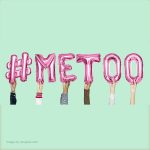Won’t You Be My Neighbor?
ne of the greatest joys of my life is spending time with my nieces and nephews. I would share pictures, but I fear their intense cuteness might cause you to look at the children in your life differently. You’re welcome.
Recently, I was visiting three in Ohio. We watched some of their favorite shows during their limited screen time. I was reminded of my childhood favorites: Sesame Street, Sharon, Lois, & Bram’s Elephant Show (Skinnamarinky-Dinky-Dink, anyone?), Mr. Dressup, and, most significant, Mr. Rogers’ Neighborhood.
Mr. Rogers taught me some foundational elements of what it means to be human, kind, and caring. Of course, at the time, I was drawn to his warmth, changing sweaters (mall was one of my first words, after all), and singing. However, my mom was more astute to the deeper life lessons. There’s a reason she also loved the show and over the years gave me a book with Mr. Rogers’ advice and, most recently, postage stamps with his smiling face.
For decades, I’ve carried lessons from Mr. Rogers with me. There is one quote in particular which has resonated consistently in my life: “When I was a boy and I would see scary things in the news, my mother would say to me, ‘Look for the helpers. You will always find people who are helping.’”
And I have. I have seen the helpers.
And in seeing the helpers, I have seen the basic good in humanity.
I have great hope because I believe in this innate goodness. I have witnessed this goodness in the face of heinous acts and unacceptable tragedy and loss, including that of power-based personal violence. It is this same hope which anchors me in my work of prevention.
Quite frankly, I believe things can be different; the current astounding rates of sexual assault, intimate partner violence, and stalking are not inevitable. It is this great hope that sustains me. It is this great hope which gives me joy. By embracing this hope, I have been able to connect with others and engage them as neighbors in this work.
The success of prevention work is directly tied to critical mass (i.e. getting the majority of folks to join us). Regardless of our method – from bystander intervention to intersectionality/social justice work – our greatest impact occurs when we successfully engage the masses.
My starting place has been believing that overall, the masses are good and they also want fewer people to be hurt. Yet, how do we inspire them to believe in this real possibility? First, we must connect with our own hope.
Ask yourself: What gives me hope? Where have I seen the goodness of people? What inspires me to be a neighbor?
Once we are aware of our own hope, we can then share this with others and grant them permission to reignite their own. And, together, remember:
“It’s a beautiful day in this neighborhood,
A beautiful day for a neighbor.
Would you be mine?
Could you be mine?”






